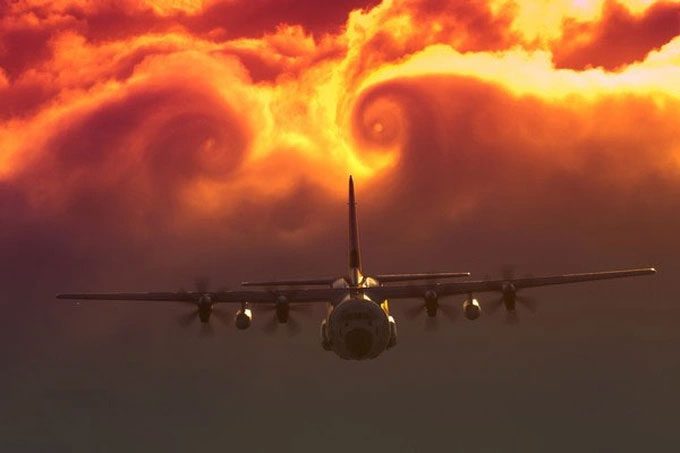Events occurring with the Sun can impact electronic devices and cause serious accidents, such as an aircraft being caught in the vortex of a solar storm.
So, if that happens, could the aircraft crash?
The answer is not simply “yes” or “no,” because many factors influence the outcome of such an event. However, regulatory agencies have assessed the potential impacts of solar energy events on flights and are developing safety measures to ensure that airlines and pilots can take appropriate actions in such cases.
What Happens During a Solar Storm?
The simplest scenario when a passenger aircraft encounters a solar storm is that it will be exposed to significantly higher levels of radiation, but this alone is not enough to cause the aircraft to crash.

A passenger airplane flying above a cloud layer during sunset.
Danger truly arises when the aircraft’s navigation systems are affected. Solar storms can also disrupt communication with ground control, making it impossible for pilots to communicate with the ground control station or determine the aircraft’s position. The closer an aircraft flies to the polar regions of the Earth, the more susceptible it becomes to the effects of a solar storm.
Solar storms can emit X-rays and plasma into space. With a sufficiently strong storm, these X-rays and plasma can reach Earth. Proton particles can collide with superconductors in the aircraft’s circuits and high-altitude satellites, as the thin atmosphere at this altitude struggles to slow down the protons. Solar storms can also affect the ionosphere of the Earth, obstructing the reflection of radio waves. Consequently, communication between objects like aircraft and satellites can be lost.
Next is radiation. In just a few seconds, passengers on the aircraft may be exposed to more radiation than they would encounter in over a year of natural daily exposure.
What Can We Do to Mitigate the Effects of Solar Storms?
The positive news is that aviation regulatory agencies have begun preparing for solar storm scenarios. The International Civil Aviation Organization (ICAO) is actively working to protect aircraft from space weather events.
Specialized agencies for space weather have been established, with 16 countries focusing on supporting forecasts for four global centers. When warnings are issued, the impacts on flights can be minimized, for example, by altering flight paths to avoid polar regions and flying at lower altitudes or landing in cases of severe solar storms.
One issue that regulatory agencies need to address is that we currently lack the capability to forecast space weather. Airlines need to be alerted 12 to 24 hours in advance to effectively rearrange flights, but it will take more time for scientists to provide reliable space weather forecasts.
Airlines are also encouraged to develop their own protocols for solar storm situations. Aviation technology is continuously evolving to build systems that protect hardware and electronic devices against solar energy events.
With all these efforts, in the future, pilots may not need to change their course or altitude, and aircraft could fly over the Arctic without encountering issues.
In other words, for now, we do not see the risk of aircraft crashing due to solar storms, but that does not mean it won’t happen, and aviation safety experts have begun considering such scenarios.





















































